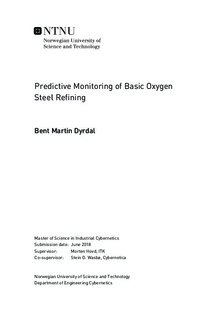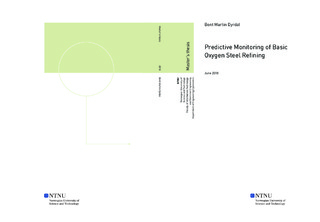| dc.description.abstract | With the late focus on digitalisation and industry 4.0, many industries have significantly evolved. More instrumentation and automation has led to better maintenance planning, more efficient production and increased safety. However, the steel industry has not been a part of this digitalisation. This is mainly due to its hostile environment with extreme temperatures and pressures, making instrumentation difficult. With few measurements available, the production of steel has been based on experience. It is, therefore, preferable to combine the measurements available with a mathematical model to predict the operating conditions and use these predictions along with a controller. In this work, a first-principles model of a basic oxygen converter has been further developed from a preliminary project. The model is validated against process data given by SSAB and process characteristics described in literature. Using this model, the application of moving horizon estimator and nonlinear model predictive control have been investigated. The estimator and controller performance was tested by using a noise corrupted process simulator.
The results from the modelling showed that the model had a good correlation regarding steel and slag content. However, the need for testing the model against batches with more measurements is evident. The model has too low iron oxide content during oxygen blowing, and the fume's temperature profile does not match the measurements from SSAB. By running test cases with more measurements during blowing, there could be indicators as to why the model deviates from these measurements. For the model-based estimation and control, the estimator showed that with only end-point measurements it was able to estimate parameter values with a slowly varying trend, and the controller met the desired set-point. For large variations in oxygen utilisation, the estimator was not able to estimate the correct value and the controller did not achieve the desired end-point carbon content in the steel. By adding more measurements, the estimation, as expected, improved. However, the estimates were not accurate enough to achieve good end-point prediction. | |

